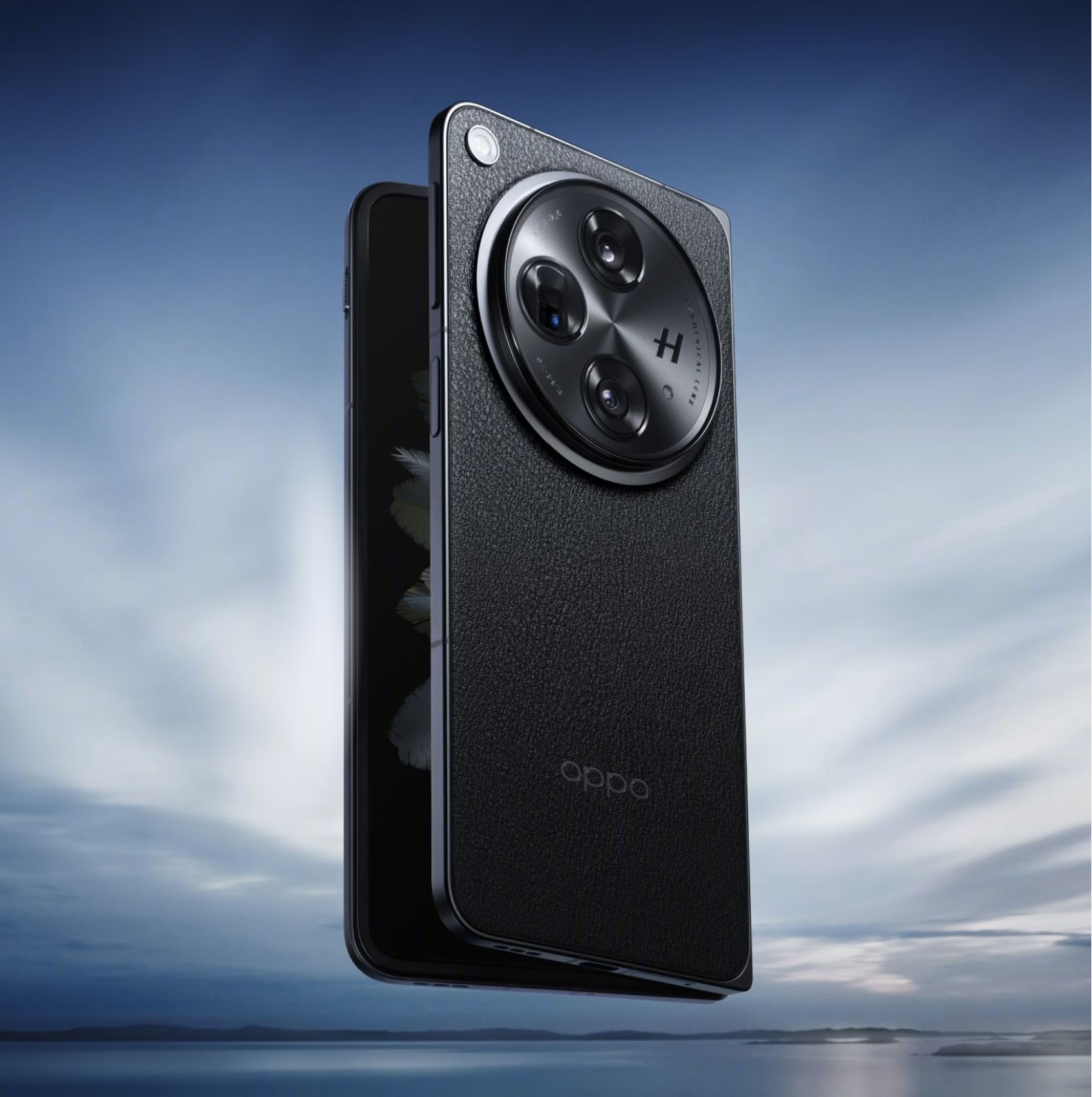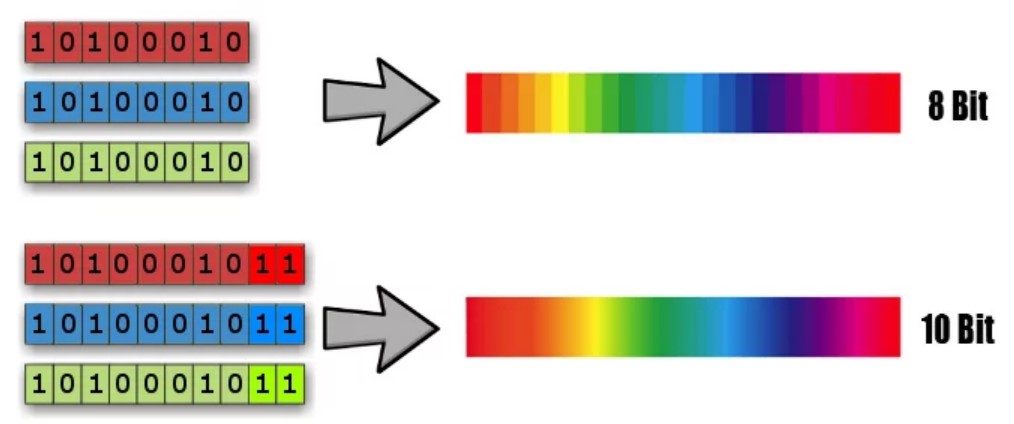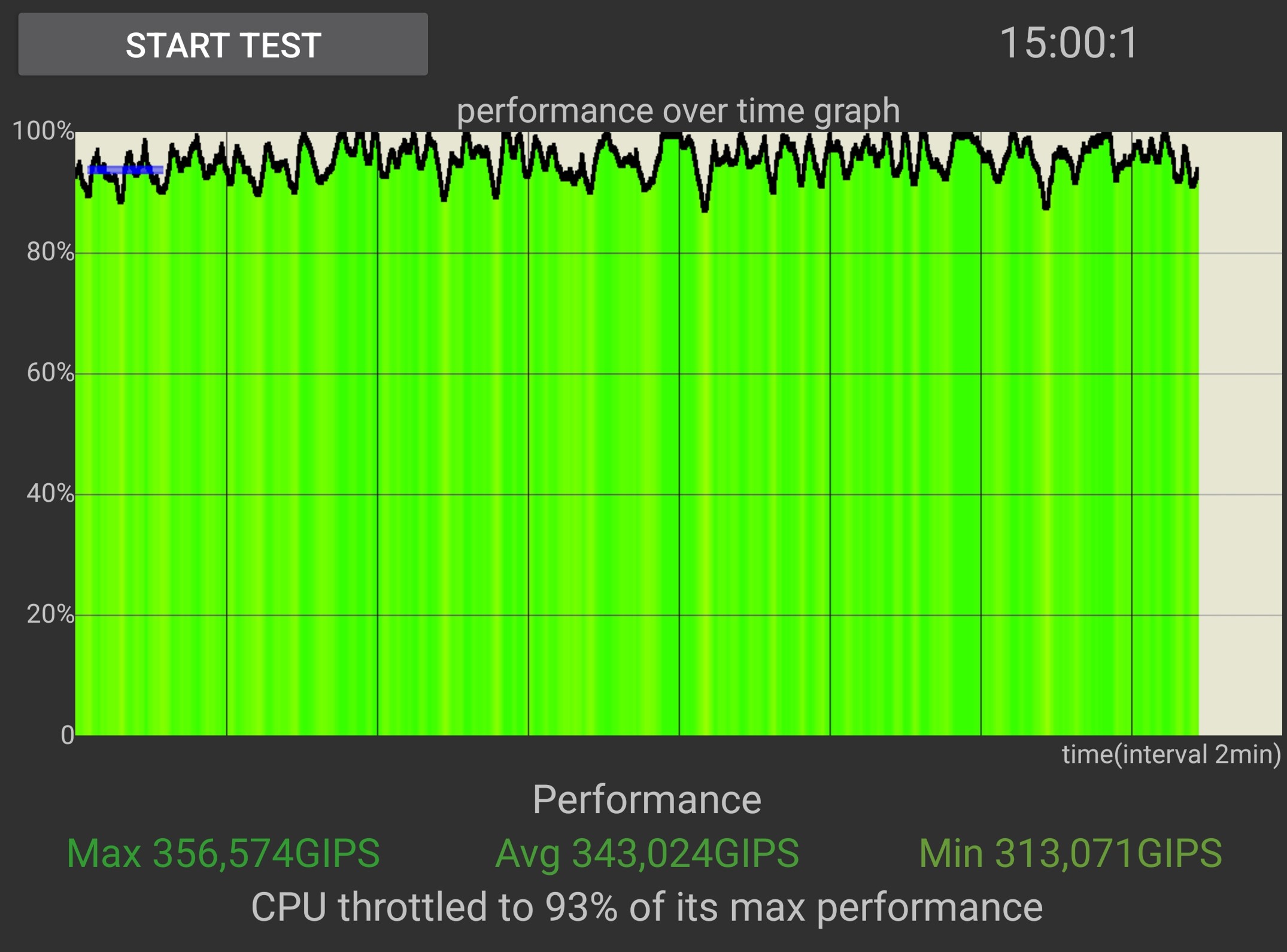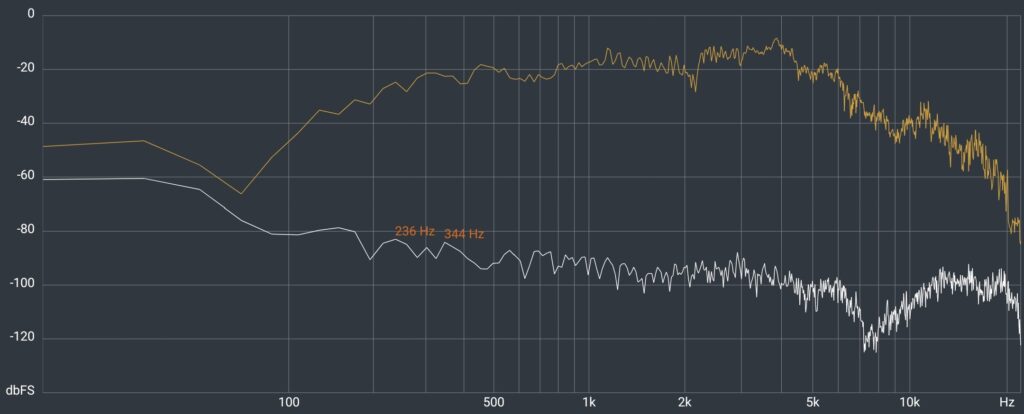OPPO Find N3 Fold First-look – reader FAQs answered (smartphone)

The OPPO Find N3 Fold First-look is at the start of what will be over 70 exhaustive tests over four weeks of use. As we now have the device, we can answer a few FAQs that readers and consumer test panellists have asked.
While most FAQs are about how it stacks up against the excellent Samsung Galaxy Fold5, this is not meant to be a shoot-out. Each has its strengths in different areas, and your decision to buy either one comes down to your personal preference. Either is an excellent choice based on your needs.
Q: Do we get the Gold colour, and what about the Find N3 Flip?
Initially, we get the Classic Black vegan leather version. The Find N3 Flip is not yet scheduled for Australia due to a huge home market demand. In good news, the new ColorOS 13.X features, particularly the ability to run standard Android Apps on the external screen, are coming to the OPPO Find N2 Flip – its flipping good.
Q: Does it support Alt DP over USB-C to screen mirror over USB-C to HDMI?
Yes. We have tested USB-C to HDMI on a 4K monitor and TV, USB-C to DisplayPort on a 4K monitor, and USB-C to an external USB-C screen with a keyboard that acts as an HID device to the phone.
Samsung supports this, too.
Q: Will it connect to my Windows PC?
It supports OPPO Connect for PC, which converges Windows and OPPO phones over Bluetooth and Wi-Fi and supports multiple monitors. It has App Handoff and much more (not tested yet).
Or you can use Microsoft Link to Windows App, which is just about notifications, messages, photos, and calls.
Find N3 Fold First-look

Samsung supports its Phone Link App and Microsoft Link.
Q: What version is the USB-C port
A: It uses the Qualcomm SD8 Gen 2 System on a Chip and has a USB-C 3.1/3.2, Gen 1, 5Gbps port. It supports audio/video/data downstream streams and upstream charging.
Samsung is the same.
Q: Does it support a mountable external SSD?
It supports an external SSD in OTG mode, meaning you can cut and paste it but not mount it as external storage. Remember, this comes with 512GB (Samsung Fold5 has 256GB). We have asked OPPO to consider a firmware update enabling mountable drives.
Samsung does not mount an external SSD either. This affects Vloggers and videographers who need live, fast, external storage.
Q: Does it support Samsung Dex or Motorola ReadyFor Desktop?
A: OPPO has not yet released its Android Desktop. It supports Android 13’s Desktop, which is currently under development. In short, it can use a USB-C or BT keyboard/mouse/trackpad/gamepad and will remotely access Google Apps, Microsoft 365 Apps and remote desktop.

Samsung has its Desktop Experience (DeX), a more mature product.
Find N3 Fold First-look
Q: What is the phone antenna strength?
Initial tests show -84dBM (excellent) and up to 7.6 pW picowatts (excellent), as well as finding the second tower at 2-4pW and the third and fourth at 500fW -1pW. It should be perfect in the city, suburbs, regional and rural areas. Note the review unit is Dual SIM and e-SIM.
Samsung also has excellent phone antenna strength.
Q: Does it have Qi wireless charging?
No. It has USB-C 80W capable (67W inbox) OPPO SUPERVOOC charging in 42 minutes. It also has 10W reverse cable charging.
Samsung has 25W USB-C (1 hour 26 minutes charge), 15W Qi, and 4.5W reverse charging – no charger inbox.
Q: OPPO claims 1600 full battery charge cycles – how?
OPPO uses a 4800mAh dual battery and dual-channel charger, meaning it can charge faster. It has a Battery Health engine that monitors charging and establishes nighttime charging patterns. Its battery holds at least 80% capacity after 1600 full recharge cycles.
Samsung has 4400mAh dual batteries with single-channel charging. It has 500 full recharge cycles (not disclosed – according to the Guardian).
Find N3 Fold First-look
Q: How much better is the 10-bit/1.07 billion colour screen than an 8-bit/16.7m screen
OPPO’s 10-bit colour has a wider DCI-P3 gamut (97% of 1.07 billion colours). The extra colours and tones mean excellent photo image/preview screen match, no colour banding when playing HDR videos and incredible depth of colour. It is a beautiful screen for video and creators. OPPO has fixed the screen to allow polarised sunglass wearers to get full colour and visibility.

Samsung’s 8-bit screen shows 98% of 16.7m colours – 16.4 million versus OPPO’s 1.04 billion colours. It shows colour banding.
Please read 8-bit versus 10-bit screen colours. What is the big deal?
Q: How accurate is OPPO’s claim of 2800nits when playing Dolby Vision and HDR10+ content?
Initial tests show that it can reach 2800nits in a 1% window. We usually measure in a 2 to 10% window, where it is 2200-2400 nits. Still, that is well over twice what you need for frame-by-frame metadata Dolby Vision which will play on both screens. OPPO maxes out at 600 nits, typical in auto-brightness.
Samsung tops out at 1750nits in HDR10+ but can’t decode Dolby Vision metadata, instead downmixing to the inferior movie-by-movie HDR10 metadata. Samsung maxes out at 470 nits, typical in auto brightness.
Read Dolby Vision, HDR and SDR TV – a huge difference.
Q: OPPO talks of the Golden ratio screen. What is that?
Its internal screen has a 7.8” 9.7:9, 2440 x 2268 ratio. This means it still maintains the widescreen ‘9’ ratio. It is more suited to productivity (Word, Excel, etc.) in landscape mode. It will play 2160p HDR10+/Dolby Vision video content.
OPPO’s external screen is 6.3” 20:9, 2484 x 1116, like most Android phones. It also natively supports 1080p HDR10+/Dolby Vision video content. It is a 100% compatible 6.3″ smartphone that can run all apps.
Samsung’s internal screen is 7.6” 21.6:18 (10.8:9) 2176 x 1812, which is taller. It only plays 1080p HDR10+ video content. Samsung’s external has a 6.2” 23.1:9, 2316 x 904, which is taller. Some video streaming services only see it as a 720p SDR screen.
Find N3 Fold First-look
Q: Is the crease really imperceptible?
Yes, you can barely see it when looking straight at the screen. It is because its Flexion Gen 3 hinge folds the glass into a teardrop shape instead of a tighter radius that causes creasing. The hinge is TÜV Rheinland, rated for over 1,000,000 folds.
Samsung has a more visible crease, and it is wider, so it is more apparent when swiping sideways. It has wisely stopped advertising 400,000 hinge tests because it set unreasonable ACL warranty expectations.
Q: What is the difference between OPPO’s nano Crystal Glass on the external screen and Gorilla Glass Victus?
We have not seen ‘nano Crystal Glass’ specifications, but OPPO states it is tougher and more scratch-resistant than Gorilla Glass Victus. We suspect it is DragonTail Star 2, Used by OPPO in the Reno 10 series.
Samsung uses Gorilla Glass Victus2 on its external screen. It may be tougher.
Read: Smartphone screen protection – what you need to know
Q: OPPO has 16GB of RAM versus Samsung’s 12GB – do we need that?
OPPO uses RAM differently and, with its Dynamic Computing engine, can keep over 40 Apps open in the background for instant switching. That number of Apps would choke a typical smartphone. It can also expand that 16GB LPDDR5X by adding up to another 12GB of virtual RAM – like Windows Swap Space that uses some SSD storage as dynamic RAM. It is impressive and, in my tests, makes multi-tasking snappy and efficient.
Samsung has 12GB LPDDR5X and no virtual RAM.
Q: Is the Qualcomm SD8 Gen 2 SoC prone to throttling?
It is a 4nm chip and does get hot. But remember, a Fold has a soft self-healing plastic layer over a UTG foldable OLED screen that will not stand up to use as a gamepad – a fingernail can scratch it – so throttling is not as much of an issue.
OPPO uses the standard 3.2Ghz SoC (Samsung uses the Galaxy Edition 3.36Ghz). Ditto for use as a game device.
OPPO has excellent thermal management and only throttles 7% in a 15-minute, 100% load test.

| Item | Samsung Galaxy Fold5 | OPPO Find N3 Fold |
| Maximum GIPS | 362,558 | 356,574 |
| Average GIPS | 311,799 | 343,024 |
| Minimum GIPS | 259,591 | 313,071 |
| Throttle | 22% | 7% |
| Rear temperature | 45-47° | 37-40° |
Q: What about Waterproofing?
OPPO has IPX4. X meaning it has not been tested for dust ingress. 4 means waters splashing against the enclosure from any direction for 10 minutes shall have no harmful effect, e.g., rain. The Flexion Hinge has a minimal area that could collect dust but does not impede it or the screen’s operation.
Samsung has IPX8. Ditto for dust, and the gap is slightly larger for dust ingress. It can be immersed up to 1.5 metres in fresh, still water for 30 minutes.
How does it sound?
OPPO has three TFA98 (each has 2 x 12W) stereo amplifiers – one for the earpiece (mono) and two for true stereo 2.0 left and right (4 x SLS1112E speakers in landscape mode or two top and two bottom plus the earpiece). This is a hugely powerful setup. It natively decodes Dolby Atmos and has a DA EQ. It also has spatial audio for headphones. Volume is 84dB maximum with minimal distortion.
Mid-bass starts at 80Hz, then is flat to 6kHz, slightly dips to avoid harshness, and then is flat to 20kHz. This is the audiophile nirvana – neutral – where an EQ can recess any frequency. The sound stage is wider than the device. Dolby Atmos content widens the stage again and adds a little 3D height.
OPPO summary – enough mid-bass to satisfy and great sound all around.

Samsung has a more mid-centric sound signature for clear voice and lacks strong treble, so music or movies lack dynamism.

Find N3 Fold First-look
Q: OPPO has a claimed 11.9mm folded thickness and 239g. Is that right?
The body is 11.9mm folded with the Classic Vegan Black leather (11.7mm with glass). But the camera housing takes that to 17.25mm, and then you probably need to use a case (supplied). My scales say 245g for the glass edition and 239g for the vegan leather. The supplied case adds 20g. It is 153.4 x 143.1 x 5.9 (flat) and 153.4 x 73.3 x 11.9/11.7mm (folded)

Samsung is 154.9 x 129.9 x 6.1 mm (flat) and 154.9 x 67.1 x 13.4mm (folded) x 253g plus a 35g case (not supplied).
Q: Do we need Wi-Fi 7 tri-band?
While OPPO’s Wi-Fi chip supports Wi-Fi 7 tri-band, only 6E AXE is enabled as Australian standards have not been ratified (and may not be for some time).
Samsung has the same Wi-Fi chipset.
Q: Are Qualcomm BT aptX codecs necessary?
First, read Bluetooth sound codecs – what you need to know as the game has changed.
I prefer the Qualcomm aptX suite as it enables better sound on a wider range of ear/headphones and speakers. OPPO has 16-bit/44100Hz, SBC, AAC, aptX, aptX HD, aptX Adaptive, aptX TWS, and LDAC to cover all bases.
Samsung has SBC, AAC, aptX (free version), LDAC and Samsung Scalable Codec (SSC). The latter is for its earphone products and is like aptX Adaptive. Samsung appears unwilling to pay licence fees for Dolby Vision and Qualcomm aptX premium codecs – it prefers its free HDR10+ and SSC.
Q: How is the camera?
OPPO has a 48+48+64 main/ultra-wide/telephoto. It uses the new Sony LYTIA double stacked 53MP sensor (48MP cropped) that doubles light and details, rivalling a 1” DSLR sensor. The 48MP Ultrawide gives excellent details. But the star is the 64MP OIS Telephoto with 3X Optical, 6X Lossless and 120X Hybrid digital zoom. It also has a 20MP internal and 32MP external screen selfie. All will record 4K. Its 64MP OIS also has Hasselblad portrait features that can focus on a subject and blur both the foreground and background. OPPO has considerable photography prowess and has incorporated its MariSilicon camera smarts into the SD8 Gen 2 SoC with its AI numeric processor. Its images are superb.
Samsung has a 50+12+10MP main/ultra-wide/telephoto. Its telephoto gives 3X optical and up to 30X digital. Its internal screen selfie is 4MP, and its external screen is 10MP.
Q: How do I get service?
OPPO has its headquarters in Sydney and walk-in service in Sydney and Melbourne. Warranty repairs are a matter of obtaining an online return authorisation, sending it to Sydney, and a repair or replacement is sent back in a few days. I have used the service once this year, and allowing for Australia Post delays; the turnaround was within 48 hours. Service is tracked by IMEI number.
Samsung is based in Sydney. You can take it back to a Samsung store in Sydney CBD, Paramatta, Highpoint (Vic), Chadstone (Vic), Werribee (Vic) and Carousel (WA) or return it to Samsung for warranty. I used this walk-in service for a broken screen, which was ready for collection in five working days.
Not much between them.
Q: OPPO is Chinese. Are there any privacy issues?
OPPO is a Chinese company, but its founder, Duan Yongping, was ‘re-educated’ by the CCP and fled to the US in 2001. He stays out of the spotlight, enjoys California with his journalist wife and kids, and is a significant US philanthropist.
BBK Group (includes OPPO, OnePlus, vivo, realme and more) was one of the first Chinese companies to state that it will never sell users’ data and fully comply with the European Union’s General Data Protection Rules, California Privacy Legislation, Australian Privacy Legislation and complies with all countries local privacy rules. It has servers in Singapore (Australia and Asia-Pacific), India, Europe, and America. Its privacy policy is benign. Its China-only market phones are different and comply with the rules of that Country.
OPPO’s first SUPER FACTORY outside China is in India, making Reno, OnePlus and realme. It is likely many Australian phones will come from here.
It is preparing for Made in China 2025; it has factories in Turkey, Thailand, and Indonesia, and announced factory expansion into Egypt (for Europe) and six other locations. Its design centre is in London.
Q: ColorOS 13 – what is that?
OPPO phones work as standard Google Android, and we recommend using it that way with Google Play Apps. Colour OS 13 is a user interface over Android that allows for customisations like the internal screen double-width display, taskbar, instant swap from internal to external screens (and vice versa), camera app and much more. OPPO offers two two-year warranty, four years of Android OS upgrades and five years of security patch updates.
You can sign into its Hey Tap App to access its App Market, Theme Store (Wallpapers. Ring tones, fonts), Game Centre, Browser and Rewards points. This is more for the Chinese market.
Samsung is a South Korean company. Its premium phones are made there. Samsung strongly encourages you to sign into a Samsung Account to access its Galaxy-only ecosystem. We recommend you use Google Play Apps as swapping to another brand Android phone uses Google services instead of Samsung Smart Switch. Samsung has the same 2+4+5 policy.
Read: Want a new Android phone? Old Android to Android 13 is easy.
Q: Which fold should I buy?
It is not an easy choice for those who can afford a fold.
- Value: OPPO is $2,699 for the 16/512GB version, including a 67W charger and case. Samsung is $2799 for its 12/512GB and excludes the charger and case. On value alone, OPPO wins. But Samsung has various trade-in options and Telco plans that may sway you.
- Performance: Not a lot between them. OPPO has a distinct edge in thermal management.
- Battery: OPPO offers 1600 recharge life cycles, faster 42m charging and a 67W SUPERVOOC 2.0 USB-C charger inbox. Samsung has one hour 26 minutes, 25W UCB-C charging (not supplied), and 15W Qi charging.
- Camera: Both the OPPO and Samsung produce excellent day and night photos, and you will be happy with either. But OPPO’s camera specs are much higher than Samsung’s if you want more.
- Comms: Not a lot between them
- LTE/5G: Not a lot between them
- Android/warranty/upgrade/patch/service: Same 2+4+5
- IP rating: OPPO has IPX4, and Samsung has IPX8.
On paper, the OPPO leads in almost all fields, but we must not forget Samsung’s brand power and wider distribution channels.
Remember these preliminary tests will be confirmed in the full review.
Announcement: OPPO Find N3 Fold – the fold goes one better
Samsung review: Samsung Galaxy Z Fold5 2023 – It is an open-and-shut case
Find N3 Fold First-look
Brought to you by CyberShack.com.au







